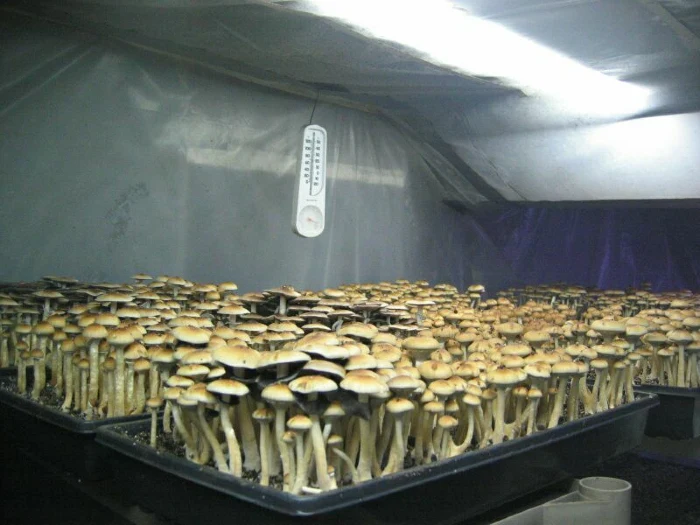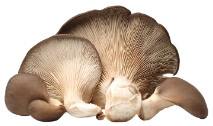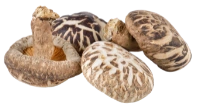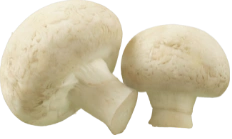Are you looking for a fascinating and rewarding hobby that combines nature, sustainability, and delicious culinary delights? Look no further than mushroom farming! Whether you have a small garden or a dedicated space in your backyard, mushroom farming can be an enjoyable and fulfilling venture.
In this article, we’ll explore the benefits of mushroom farming, provide a cost analysis, discuss the equipment you’ll need, offer tips and best practices, and help you get started on your mushroom farming journey.
Benefits of Mushroom Farming
Year-Round Production: With proper techniques, you can cultivate mushrooms year-round, providing a consistent supply for your kitchen. Unlike many other crops, mushrooms don’t rely on seasonal variations or long growth cycles.
Nutritional Powerhouses: Mushrooms are low in calories, packed with essential nutrients, and known for their unique health benefits. They are a good source of vitamins, minerals, fiber, and antioxidants, making them a valuable addition to a balanced diet.
Sustainable Farming: Mushroom farming is an eco-friendly practice that requires minimal space and resources. Mushrooms can be grown on various organic substrates, such as agricultural waste or sawdust, reducing the need for synthetic fertilizers and pesticides.
Cost Analysis
The cost of starting a mushroom farm depends on the scale of your operation and the chosen mushroom varieties. Here are some key cost considerations:
Spawn: Spawn is the mycelium (mushroom “seeds”) used to propagate mushrooms. It can be purchased from reputable suppliers and typically costs around $10 to $30 per pound, depending on the variety.
Substrate Materials: The substrate is the material on which mushrooms grow. Common substrates include straw, wood chips, sawdust, or agricultural waste. Costs vary depending on availability, but a rough estimate is around $0.50 to $2 per pound.
Infrastructure: Mushroom farming doesn’t require elaborate structures, but you may need shelves, trays, or containers to create a suitable environment. These can be acquired or repurposed at a relatively low cost, depending on your setup.
VERSAILLES & THE FUTURE OF MUSHROOMS

During the 17th century, a French botanist and gardener named Jean de La Quintinie served as the director of the fruit and vegetable gardens of the Palace of Versailles, under the reign of Louis XIV. La Quintinie was known for his expertise in horticulture and his innovative techniques.
One of La Quintinie’s notable accomplishments was his success in cultivating mushrooms for the royal court. At the time, mushrooms were considered a delicacy and were primarily foraged from the wild. La Quintinie saw the potential for controlled cultivation and devised an ingenious method to grow them.
He built special mushroom beds made of composted horse manure and rich soil. He then scattered mushroom spores on top and covered the beds with layers of straw and horse manure. The heat generated by the decomposing organic matter created the ideal environment for mushroom growth. La Quintinie’s technique allowed for consistent mushroom production, even during winter, when wild mushrooms were scarce.
The king was so impressed by La Quintinie’s skill in mushroom farming that he appointed him as the Royal Mushroom Cultivator. This title bestowed great prestige upon La Quintinie and further solidified the recognition of mushroom farming as a sophisticated pursuit.
La Quintinie’s contribution to mushroom cultivation not only delighted the royal court with a steady supply of mushrooms, but also paved the way for future advancements in mushroom farming techniques. His innovative approach continues to inspire modern mushroom farmers to this day.
Equipment Required
Growing Containers
You’ll need containers like plastic bags, buckets, or trays to hold your substrate and spawn.
Ventilation and Humidity Control
Mushrooms thrive in high humidity and require proper ventilation to prevent mold growth. Consider investing in a humidifier, dehumidifier, or misting system.
Lighting
Mushrooms don’t require direct sunlight but benefit from ambient light. If your growing area lacks natural light, fluorescent or LED lights can be used to create the ideal conditions.
Temperature Control
Different mushroom species have specific temperature requirements. A thermometer and a heating or cooling system may be necessary to maintain the optimal temperature range.
What to Expect
Mushroom farming requires patience and attention to detail. Here are a few things to keep in mind:
Growth Time: Depending on the species, mushrooms can take anywhere from a few weeks to several months to reach maturity. Some varieties, like oyster mushrooms, have a relatively fast growth rate.
Harvesting: Harvesting typically begins when the mushrooms have fully developed caps but are still firm. Depending on the species, you may have multiple harvests from the same substrate.
Yield: Mushroom yields vary based on growing conditions, species, and substrate. With proper care, you can expect several pounds of mushrooms per square foot of growing area.
Best Locations
Mushrooms can be grown both indoors and outdoors. Here are a few location options:
Indoors: Basements, garages, or spare rooms can be converted into mushroom-growing spaces. Indoor farming provides more control over environmental factors like temperature, humidity, and lighting.

Outdoors: If you have a shaded area in your garden, under trees, or a dedicated mushroom bed, you can grow mushrooms outdoors. Choose species that thrive in your climate.
Tips and Best Practices
Start with Beginner-Friendly Species: Oyster mushrooms, shiitake mushrooms, and white button mushrooms are great choices for beginners due to their adaptability and ease of cultivation.

Oyster

Shiitake

White Button
Maintain Proper Hygiene: Cleanliness is crucial to prevent contamination. Sterilize your equipment, wash your hands thoroughly, and maintain a clean growing environment.
Learn from Resources: We live in the age of YouTube University, use it! There are also many books, forums and Facebook Groups available that provide valuable insights into mushroom farming. Immerse yourself in these resources and get started.
Record-Keeping: Maintain a logbook to track your processes, including substrate composition, environmental conditions, and harvest yields. This record will help you identify patterns and make adjustments for better results.
Mushroom farming is a delightful hobby that offers numerous benefits. With relatively low costs, simple equipment requirements, and the potential for year-round harvests, it’s an ideal pursuit for hobby farmers.
By following best practices, remaining attentive to environmental conditions, and experimenting with different species, you can cultivate a bountiful mushroom crop that adds flavor and nutrition to your meals.
So, roll up your sleeves and embark on an exciting journey into the world of mushroom farming!




















